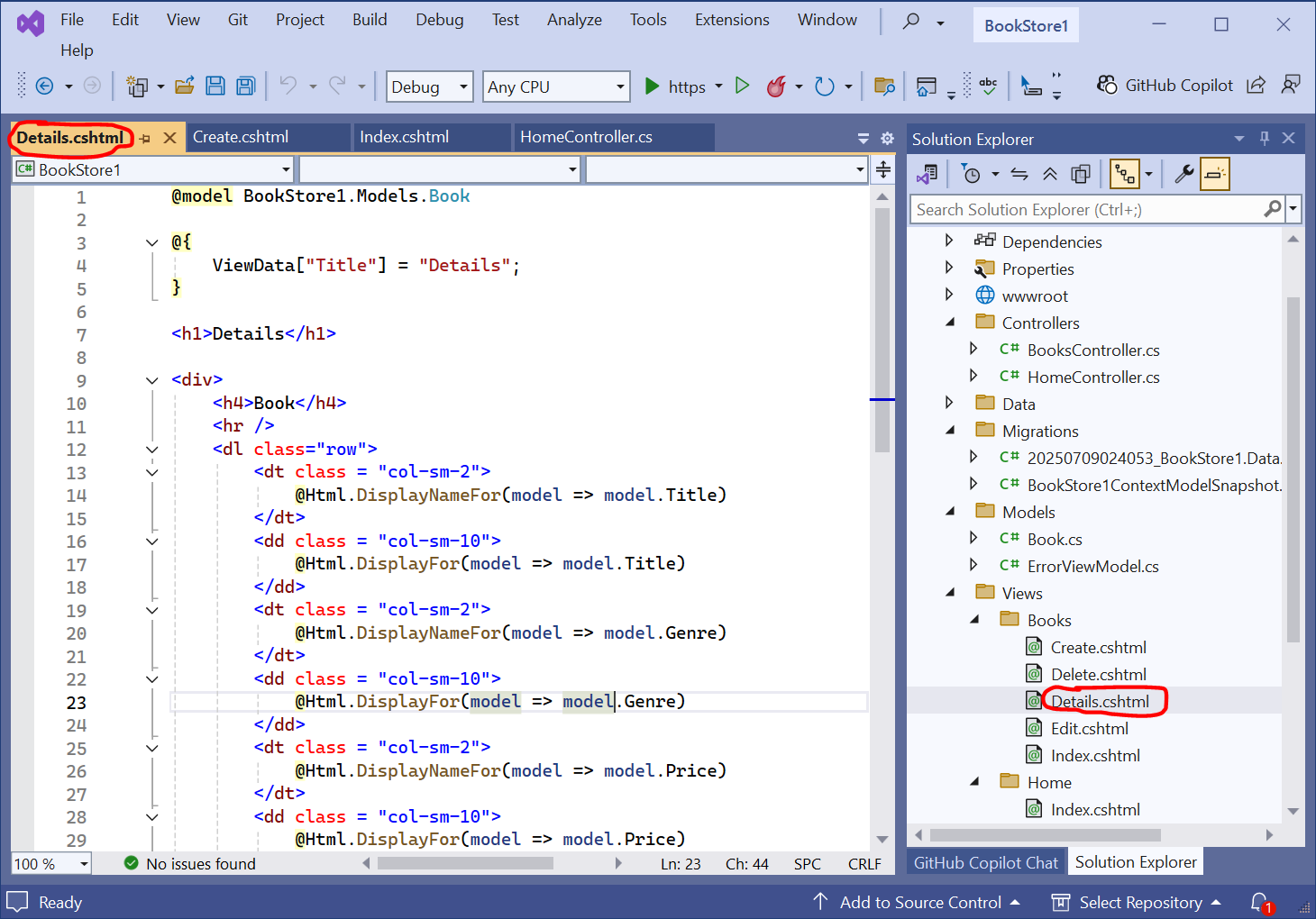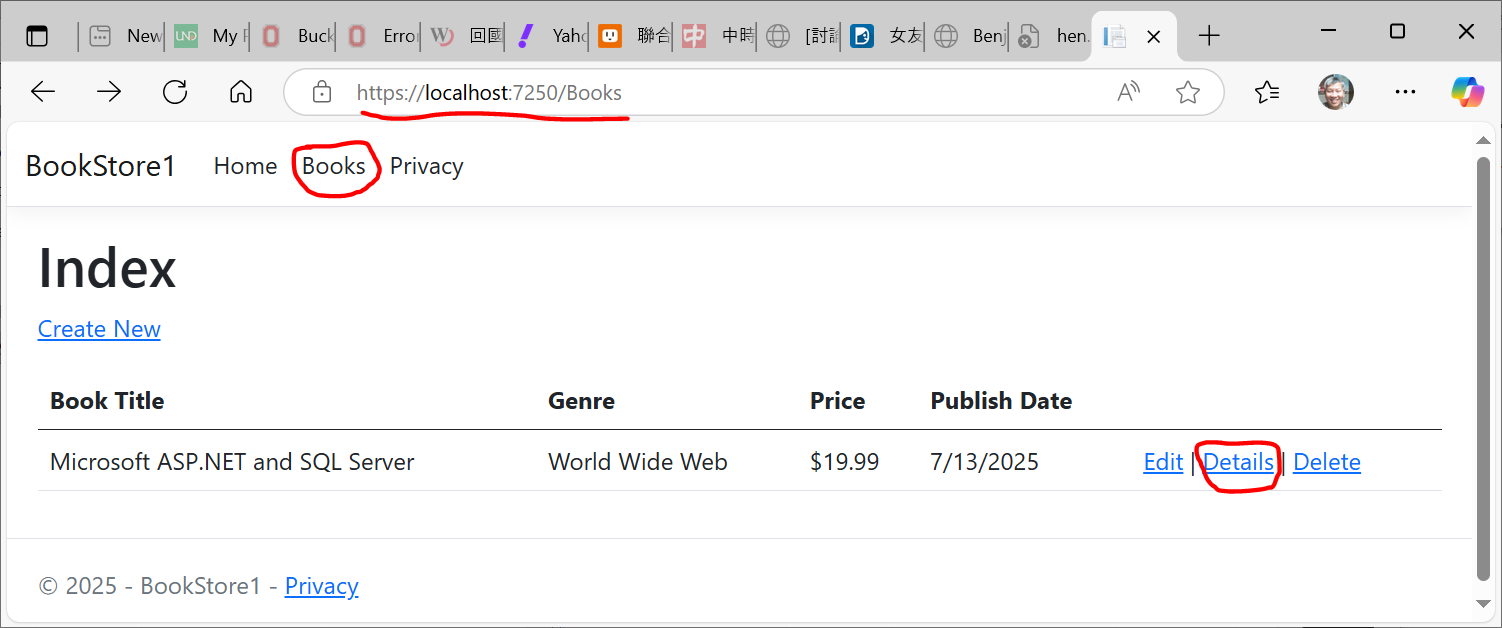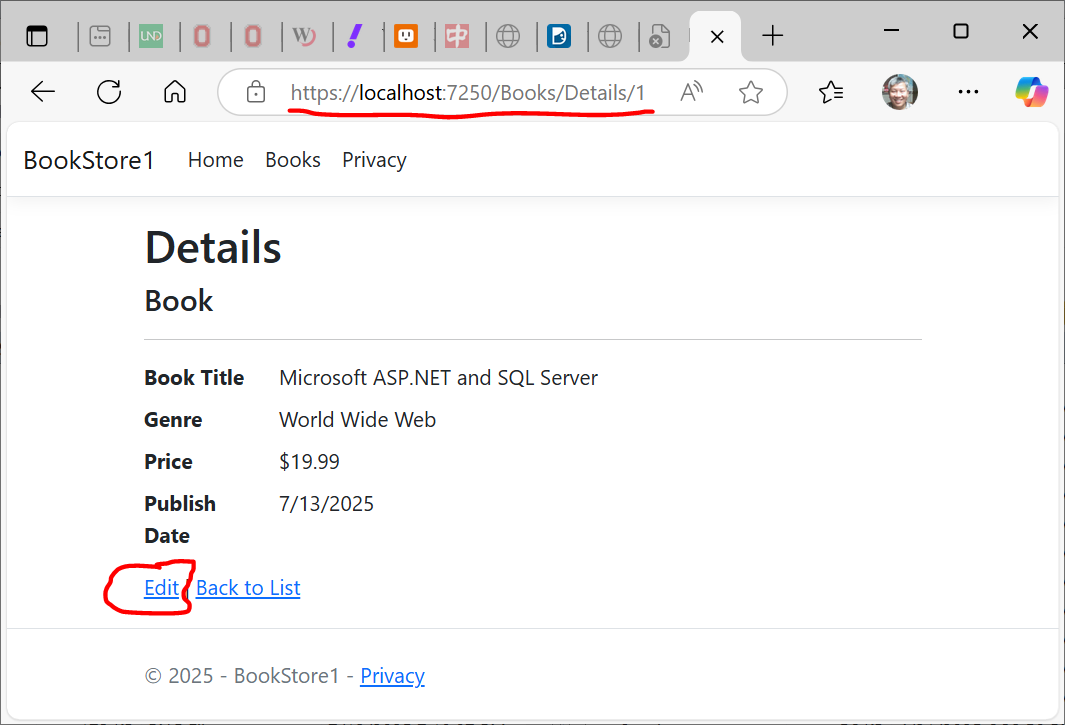Books/Details.cshtml


⇓

|
@model BookStore1.Models.Book
@{ ViewData["Title"] = "Details"; }
<h1>Details</h1>
<div>
<h4>Book</h4><hr />
<dl class="row">
<dt class = "col-sm-2">
@Html.DisplayNameFor( model => model.Title )
</dt>
<dd class = "col-sm-10">
@Html.DisplayFor( model => model.Title )
</dd>
<dt class = "col-sm-2">
@Html.DisplayNameFor( model => model.Genre )
</dt>
<dd class = "col-sm-10">
@Html.DisplayFor( model => model.Genre )
</dd>
<dt class = "col-sm-2">
@Html.DisplayNameFor( model => model.Price )
</dt>
<dd class = "col-sm-10">
@Html.DisplayFor( model => model.Price )
</dd>
<dt class = "col-sm-2">
@Html.DisplayNameFor( model => model.PublishDate )
</dt>
<dd class = "col-sm-10">
@Html.DisplayFor( model => model.PublishDate )
</dd>
</dl>
</div>
<div>
<a asp-action="Edit" asp-route-id="@Model?.Id">Edit</a> |
<a asp-action="Index">Back to List</a>
</div>
|
@Model?.Id is used to safely access the Id property of the Model object, even if Model is null.
|
“I’m dating a homeless woman. It was easier talking her into staying over.” — Garry Shandling |